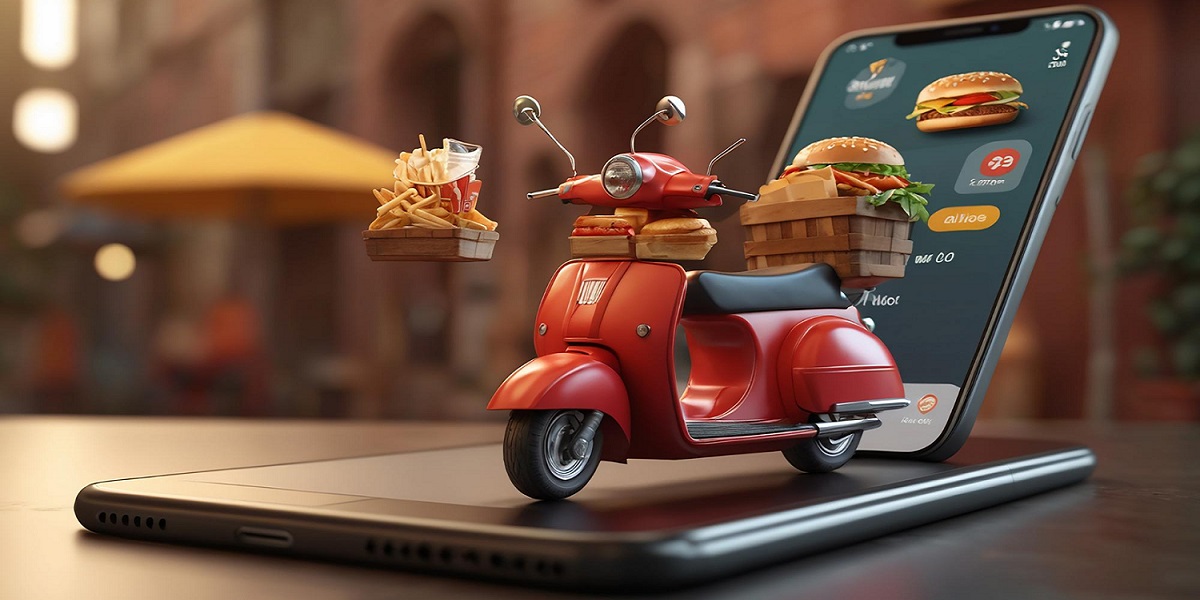
With the current lightning speed digital revolution, the process of ordering and taking meals has also been greatly transformed by the online food home delivery. All with the tap of a smart phone, a variety of foods at can be delivered straight to a clicker’s door. But no matter how advanced and easier to use the apps and platforms, occasional hiccups are inevitable. Wrong orders, late deliveries, missing items and bad food quality: Customer complaints are just a part of the food delivery ecosystem. But it is how well a delivery service can handle these complaints and make sure the customer remains satisfied that really sets a delivery service apart. Let’s drill down into the means by which popular services such as Uber Eats, DoorDash, Grubhub, and scores of others meet their user complaints.
But when issues arise with orders — whether it’s cold food, wrong items or a missing side — customers anticipate a fast resolution. All major food delivery services have these automatic dispute resolution procedures in place by now. With these systems, a user can report a problem in-app, without the need to talk to customer service. Once you lodge your complaint in the platform, you may be provided with instant relief like refund or credit to your wallet or discount coupons for your next order.
Take Uber Eats, for instance. The platform is best for prompt answers to support squalls about delivery. If service was slow or you didn’t get what you ordered, you can report it to the app and often get help on the spot. These are not only damage-control moves — they also contribute to customer retention. Most of them might come back and actually use the platform if they have gotten good response to their issues.
For new users, Uber Eats, marketing drives, coupons are there and offers like the Uber Eats First Order have been introduced in the app for users getting hands-on for the first time. This not only incentivises trial but also sends a signal that the entire user centric approach that Uber Eats has. When someone who’s never ordered you before does so and they have great food but also great support, that establishes a history of long-term loyalty.
These days, there are subscription-based services available on many delivery platforms that come with perks such as zero delivery fees, exclusive deals and faster delivery windows. Other services, like Uber Eats, offer a Eats Pass" for more frequent users. But not all customers want a subscription. Maybe they’re not ordering enough to justify the subscription, or maybe they just want to pause their online orders.
In this kind of scenarios, people generally search for How To Cancel An Uber Eats Subscription easily. Canceling your Uber Eats subscription is a straightforward process that only takes a few clicks within the app. This not only stops frustration but also evidences that the platform cares about trasparency, and user empowerment.
The big thing here is that Uber Eats isn’t pressuring users to maintain a subscription. TODO: can even try targeting the user with discounts or promo codes after cancellation, in hope of a comeback. This approach of proactively addressing possible dissatisfaction—by ensuring the user is empowered to manage their subscriptions—also plays a role in how they deal with passive forms of complaints or dissatisfaction.
Effective customer complaint management is majorly dependent on the availability of various communication points. Fostering direct communication between customers and a food delivery service, whether in a live chat within the app, via email support or on a direct phone line, lets them communicate in the manner they most prefer. Chat support is particularly preferred because of its speed and ease of use. It provides instant resolution instead of having to wait on hold.
Uber Eats, for one, provides 24/7 chat support for most questions, from how refunds work to issues with delayed delivery. When chatbots are unable to solve the problem, they pass it to a human agent. It is this hybrid model that straddles speed and personalization — fast answers yet a human touch when that’s what you’re looking for.
And some have elevated ticket resolution thanks to social media support, as found with Twitter and Facebook Messenger integrations. This is valuable in particular for those who are tech-minded and would rather interact with brands online. The mission is straightforward: meet the customer whenever and wherever they want and solve the problem as quickly as possible.
Managing complaints is not just about repairing problems — it is also an opportunity to learn from them. Online food platforms are increasingly investing in data analysis to track the trends of complaints. Whether it is a particular restaurant that consistently misses late delivery times or if there’s a courier that commonly reports missing items, platforms use this data to recognise and exclude problematic areas.
For one, Uber Eats simply collects feedback in the form of surveys and ratings after every order. If a vendor consistently gets complaints about food quality or packaging, for example, the platform could suspend the restaurant temporarily, or help them work through the challenges. Equally, if delivery partners receive multiple complaints from customers they can expect retraining or to be removed from the platform.
This demonstrates that the complaints are not just put to rest, and, rather they’re utilised as useful insights for reform. It’s an iterative circlet: complaint, analysis, resolution and, we hope, prevention.
A refund delay can make a bad experience even worse. Today the expectation of users is not just acknowledgment but instantaneous action. It’s why most food delivery apps now process partial or full refunds quickly — often within hours of the complaint. A few platforms also give users wallet credits which can be used for the next transaction, reducing the waiting period.
This is where Uber Eats really shines. When users report problems — such as an item that wasn’t delivered or food that was spoiled — the app frequently presents a set of options: Take a partial refund, receive Uber Cash or get a promo code. The wide\-range of compensation also helps users feel as if they have some control, and makes the recovery process easier to use.
And this ace with complaint solve by speed creates psychological convenience for users. It’s reassuring to them that even if things break, the company’s got their back — and that trust is the currency of the new digital businesses that are cropping up today.
No longer do users need to hunt through FAQ pages and fire off a bunch of emails to find help. Now, in-app complaint systems, however, let users pick specific problems with an order — like “missing item,” “order was late,” “driver was rude,” etc. — and send that off with just a few taps. This not only lessens the impact on the user, but also means support teams have the most accurate information to hand to resolve issues in a timely manner.
Among the more polished in-app complaint systems is Uber Eats’. A section for reporting issues through photo uploads, drop-down menus and comment boxes appears on every order page. This pragmatic level of detail means that even complicated issues can be easily articulated so that Agents can resolve them.
It also reduces our frustration threshold. Rather than starting from the beginning and having to re-hash everything, users are made to feel like they’re being heard and supported the moment they file a complaint. That’s the sort of small, unheralded change that helps keep users coming back.
Food delivery platforms are also the party to which many complaints are aimed at, but many originate from third-party vendors — specifically delivery partners and restaurants. Realising this, platforms have started focusing on training their partners and monitoring their performance.
Details: Delivery people are trained to interact with customers, in addition to navigation and punctuality, including food safety and how to use the app. Most platforms also rate their partners according to user feedback, so only the best-rated ones stay in business.
Uber Eats has a star rating threshold in place, so delivery partners have to keep a certain rating to stay on the platform. The real lady killer comes when a madagayguy making a fuss or handling food inappropriately, so a difficult-to-please customer in effect, complains about the lack of him or the rudeness of him complaining. This accountability leads to a more pleasant and fast experience for the users, and results in a cycle of improvement for our delivery partners.
Now, with the rise of AI and machine learning, food delivery apps are taking things a step further — and predicting complaints before they happen. For instance, if a user orders from a vendor who has had a recent surge of complaints, the app can display a warning message or a delay estimate. Similarly, if a delivery person is behind schedule because of traffic, the system could alert the user earlier.
Uber Eats uses real-time tracking and artificial intelligence to track delivery times, how long customers wait for orders, and other factors. Detection of anomalies — such as a driver waiting too long to pick up food — can prompt the system to intervene, re-route the driver or alert support staff to be on
This results in less negative feedback by resolving problems before they become complaints and ultimately eases end user experience.
In a competitive food delivery market with plenty of options, how a food delivery service responds to customer complaints can make or break its reputation. From on-demand chat support and changeable subscriptions to AI-driven predictions and immediate refunds, apps including Uber Eats are raising the bar on users’ expectations.
With an emphasis on transparency, speed and personalization, these services — whether in the burgeoning health, finance, cooking, exercise or fashion sectors — don’t just solve problems; they cultivate trust. Whether its giving promos to new users with services like the Uber Eats First Order Promo to respecting every user’s decision-making process with services like Cancel An Uber Eats Subscription, it’s all about thinking of user experience at the center of every show.
After all, in the realm of online food ordering, satisfaction comes from more than just the meal at your door; it comes from getting everything you ordered just how you want it, and knowing that if you don’t, you’ll be taken care of promptly and politely.
